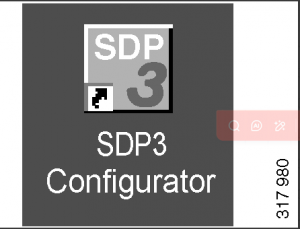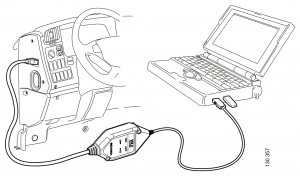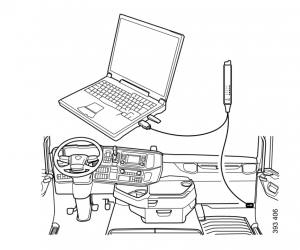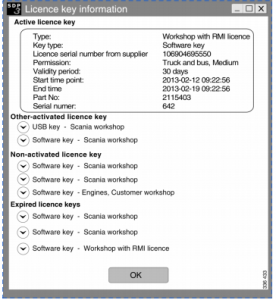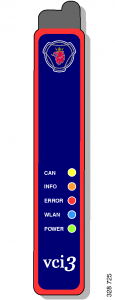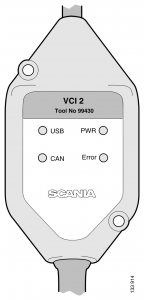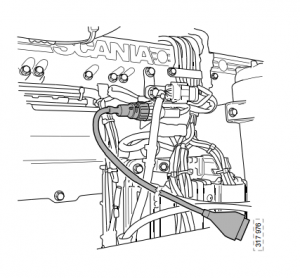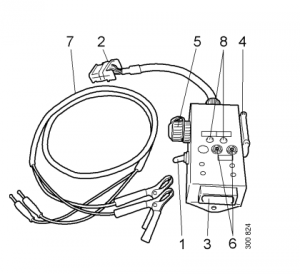In the function view you can check, adjust and calibrate at a function level. When a certain
(09.2025)Scania SDP3 2.66.3.3 Diagnosis & Programming Truck Software Download and Installation
level in a main tab is displayed and the view is then changed to another main tab, SDP3 will automatically try to navigate to the correspond- ing level in the new main tab.
The changes take place at function level and are carried out on several control units simulta- neously.
Check
Here you can troubleshoot using different
guides. The guides are grouped so that all
guides needed to troubleshoot a certain func- tion are displayed together, independent of the control units implementing the function.
If any of the control units needed to implement a certain function does not respond, the func- tion will be marked with a cross in the naviga- tion tree. The guides for checking the function cannot be started.
- Select a group in thetree structure.
- Press the button for the selected wizardto start the wizard.
Adjustment
Here you can view the parameters, i.e. cus-
tomer parameters grouped per function, which can be changed and their current values. All the parameters affected by a certain function are displayed together. During adjustment the
applied settings are saved to the SOPS file so that they can be reset when renewing a control unit.
Check the vehicle and rectify any fault codes before making any adjustments.
In order to carry out an adjustment the control units must be spare part programmed. If a con- trol unit is not spare part programmed, the sys- tem which the control unit is part ofis
highlighted with a yellow dot in the drop-down list (4). Start spare part programming by press- ing the button Spare part programming. When spare part programming is completed, the sys- tem is highlighted with a green dot.
If any of the control units needed to implement a certain function does not respond, the func- tion will be marked with a cross in the naviga- tion tree. Function parameters cannot be
adjusted.
On the side of the view there is a link to the
user function which is connected to the param- eter. Click a function parameter group and then the link to the user function for more informa- tion on how the user function works.
Adjusting several function parameter groups
- Select a group in thetree structure.
- PressChange.
( 2025.08 ) Scania SDP3 2.66.2.6.0 Marine & Industry Diagnostic SoftwareDownload and Installation
- Select a new value.
If you change the value, a red dot is dis-
played on the status field for the parameter. The symbol, a flake, displays the value that was set at the factory.
2 PressExecute.
All control units that are included in the
function will be reprogrammed. When you carry out the adjustment, the changed
parameters will be marked with a green tick if the adjustment was successful. If the
adjustment failed, the red dot will remain for the changed parameters.
Adjusting a function parameter group
- Select the function parameter group to beadjusted.
- PressChange.
- Select a new value.
If you change the value, a red dot is dis-
played on the status field for the parameter. The symbol, a flake, displays the value that was set at the factory.
- ClickExecute.
All control units that are included in the
function will be reprogrammed. When you carry out the adjustment, the changed
parameters will be marked with a green tick if the adjustment was successful. If the
adjustment failed, the red dot will remain for the changed parameters.
Scania VCI3 Diagnostic Tool for Scania Trucks Full Chips High Quality
Here you can carry out calibration using differ- ent guides. The guides are grouped so that all guides needed to calibrate a certain function
are displayed together, independent of the con- trol units implementing the function.
If any of the control units needed to implement a certain function does not respond, the func- tion will be marked with a cross in the naviga- tion tree. The guides for calibrating the
function cannot start.
- Select a group in thetree structure.
- Press the button for the selected wizardto start the wizard.
Product information
Information about how the vehicle is equipped is available here. For example, the user func- tions which are available on the vehicle and electrical information from the chassis specifi- cation are displayed.
Information about the settings ofthe different control unit parameters is also available here. You can see when a parameter was changed and which USB key was connected at that
time.
You can also see any local conversions carried out on the vehicle.
Conversion
In the Conversion work option, you can make adaptations and pre-ordered updates for the
connected product, so-called conversions. The control units affected by a conversion can reset certain control unit settings and calibrations. Make sure that the control units concerned
have the correct parameters set and also make sure that after a conversion you calibrate the control units which may have been affected. In order to carry out pre-ordered conversions, the computer must have a network connection to Scania with VCI connection and you must have Reflex access. More information on how it works can be found in the Certificate for ser- vices in SDP3 manual in the Technical Infor- mation Library (TIL), which you can reach via Reflex.
Here, you can also reset SOPS files for the
vehicle. To reset a SOPS file, a request must first have been made in FRAS. Before reset- ting, check if the vehicle has any local conver- sions. These must in that case be verified again after the SOPS file has been reset.
Note:
Scania cannot accept responsibility for conver- sions carried out on a connected product which contravene the national regulations in a spe- cific country.
Here, you can also analyse the vehicle’s stored operational data, either directly in SDP3 or via the menu option View stored operational data. For more information, refer to section Opera- tional data.
Local conversion
You can obtain information about any local conversions here. You can carry these out
yourself by setting the parameters covered by the conversion. When you choose to carry out the conversion, the affected control units are reprogrammed.
After conversion, you must report the changes to Scania by sending in the changed SOPS file. The report is a prerequisite for being able to show correct vehicle information in Scania
10.2024 Scania Multi 2410 EPC Parts Catalog & Service Manuals Installation
Multi.
Procedure
- Start SDP3 and select the Conversion workoption.
- Read and rectify anyfault codesregistered in the vehicle.
- Highlightthevehicle level in the navigation field and select the Local conversion (1)
option.
- Highlight the conversion you wish to carryout and proceed(2).
- Set the new values for the parameters con-cerned (3).
- Select OK(4).
- Save the SOPS file by selecting Save SOPS(5).
- Calibrate and reset any control units whichmay have been affected. Adjustment can be carried out from the same view in the pro- gram.
- Reportby sending in the changed SOPS fileto Scania.
Factory supported conversion
A factory supported conversion may be:
- aconversionof the connected product’s existing SOPS file which has been pre- ordered via Fras (1).
or:
- a conversionofthe connected product’s cur- rent SOPS file which has been pre-ordered via Conversion (Reflex) (2).
A SOPS file pre-ordered via Conversion (Reflex) can, besides a converted SOPS file, also consist of software for control units or program data for control units.
Irrespective of which factory supported con- version that is to be carried out, it is important that Scania has the current SOPS file from the product. The SOPS file is sent with the order via FRAS to the Helpdesk or is uploaded via Conversion (Reflex).
When you have ordered a SOPS conversion (irrespective of if the order was placed via
Conversion or Helpdesk), it is important that no local conversion is carried out before the pre-ordered conversion is downloaded to the product. Should a local conversion be carried out, the pre-ordered SOPS file will be unusa- ble.
Carry out the conversion pre-ordered via Helpdesk
This option applies if you choose to send the connected product’s SOPS file to Scania and Scania sends back an update of the SOPS file.
- Send the existingSOPS file, including a description of the intended conversion, to Scania via FRAS.
- Scania Helpdesk will send back an updatedfile once it has been approved.
- Save the newSOPS file to a local place in the computer.
Note: The new SOPS file to be saved can be named either chassisnumber.ver-
sion.imp.sops or chassisnumber.ver- sion.maps.sops.
- Make sure that the components required forthe conversion have been added to the con-nected product.
- Read and rectify anyfault codesregistered in the vehicle (1).
- Highlight the vehicle level (2)in the navi-gation field and select the Conversion (3) option.
- Back up the connected product’s existing SOPS file and save theSOPSfile to a suita- ble local place.
- Start the conversion by clicking Execute.Click through the series of dialogue boxes which will lead you to the local place in the computer where the new SOPS file from Helpdesk has been saved.
The SOPS file will then start loading.
- Follow the instructions in thedialogueboxes which follow by clicking OK.
Carry out the pre-ordered conversion
This alternative is carried out when there is a pre-ordered conversion done in Conversion via the Reflex portal.
- Complete the connected product with thecomponents needed for the conversion.
- Read and rectify anyfault codesregistered in the vehicle (1).
- Highlight the vehicle level (2)in the navi-gation field and select the Conversion (3) option.
- Click Install.
- Follow the instructions in thedialogueboxes which follow by clicking OK.
- When the conversion is complete,aconfir- mation is sent to Scania.
- Operational data is sent to Scania via SDP3if the conversion also included updating of software in the control unit.
- Certain customer settings forcustomer
parameters may have reverted to their
default values during loading. Calibrate and reset any control units which may have
been affected. Adjustment can be carried out from the same view in the program.
Note:
All fault codes are automatically deleted when the work option is finished.
































